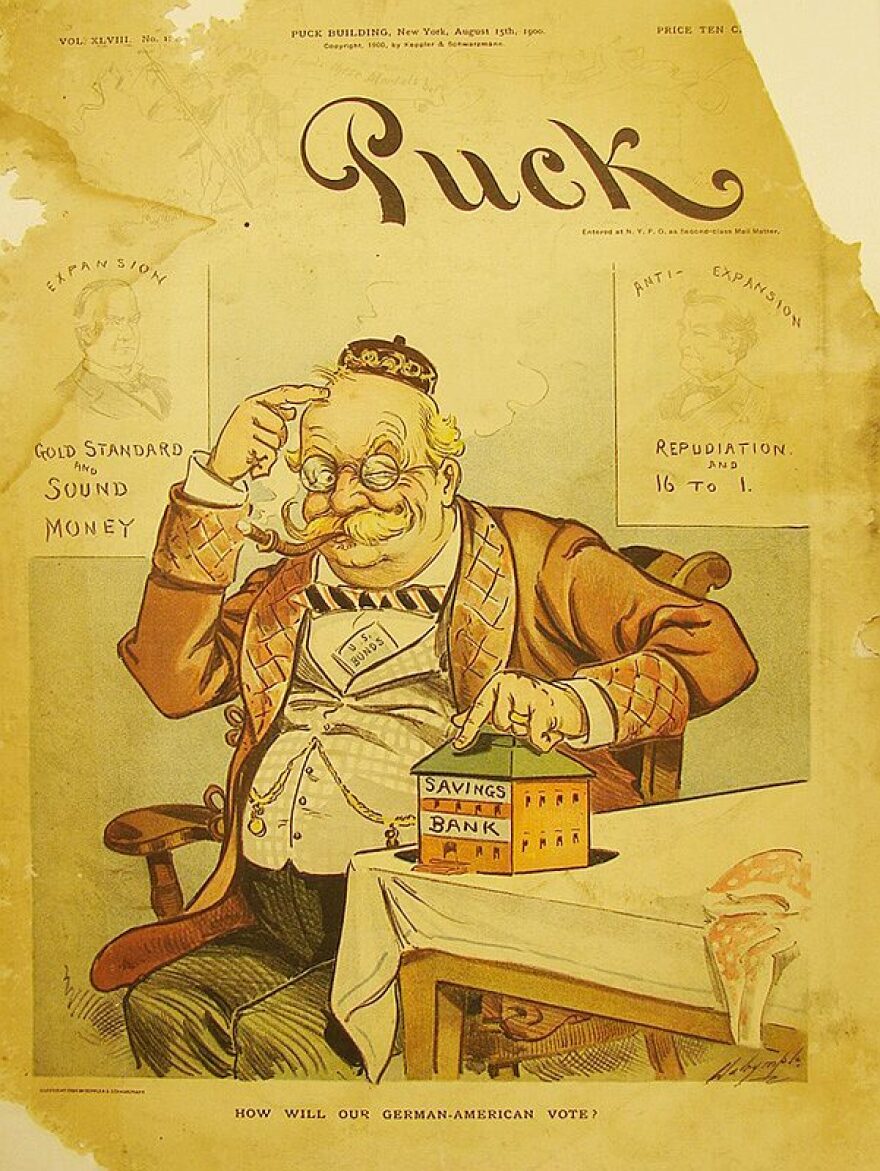I’m Joan Weaver, a resident of rural Edwards County Kansas, for HPPR’s Radio Readers’ Spring 2018 Read, commemorating the 100 year anniversary of WWI.
I have recently read Erik Kierschbaum‘s book, Burning Beethoven: The Eradication of German Culture in the United States during World War I.
Reading this book has expanded my knowledge of the war to include a realization of a different kind of battle that went on right here at home.
It was a battle brought on by fear, distrust, and hatred. Kierschbaum tells how German names for food, localities, and even animals like the dachshund were changed. He describes overt acts which ranged from demonizing to ostracizing, from tar and feathering, to even mob lynching.
Edwards County, like much of Kansas and the United States, had a thriving German-American population at the turn of the 19th century and they were proud of their language and culture. Kierschbaun writes, “Surprising as it may seem today, German was by far the most popular foreign language taught in American schools before World War I.”
Now I grew up in a county in Michigan which, like Edwards County, Kansas was also settled by German immigrants. However, my maiden name of LaRue made it obvious that I was not of German descent. The grandparents of my classmates spoke German, but neither my classmates nor their parents could. I remember that even as a teenager, it seemed odd to me that German was not offered at my high school. My friends did not have an opportunity to learn the language of their heritage and that their grandparents were still speaking.
Chapter Seven of this book explains that animosity towards all things German had caused it to be removed from schools. The January 24, 1918 issue of the local Kinsley Graphic newspaper described how it happened here in Kansas.
The Teachers’ Council in Topeka last week went on record favoring the expulsion of the German language from all schools, public, private or parochial in Kansas. Chancellor Strong of the University of Kansas led the fight on the German Language, making an especial plea that the schools where all instruction is in German shall teach English.”
Just two months after that article was run, the same newspaper reported that the Board of Education in Kinsley, the county seat of Edwards County, had decided to cut out the teaching of the German language in the city schools for the coming fall. The Kinsley Library’s collection of high school annuals revealed, like my high school in Michigan, that the German language never returned to the curriculum after its 1918 removal.
This loss of a language, along with the many other German cultural influences described as eradicated in Kierschbaum’s book, were not only losses for German descendants, but also for our country. World War I brought on an understandable patriotic fervor. Unfortunately, it also unleashed irrational vengeance and hatred here at home. As I read this book, I could not help but be embarrassed and ashamed of the deprivation and pain that fear and distrust had caused German-Americans.
America has always been nourished and enriched by diverse waves of immigrants. The historical awareness provided by Kierschbaum’s book can offer us perspective as immigrants from Mexico choose to raise their children bilingual, or as immigrants from the Middle East build a mosque.
For HPPR Radio Readers, I’m Joan Weaver from Edwards County, Kansas.







